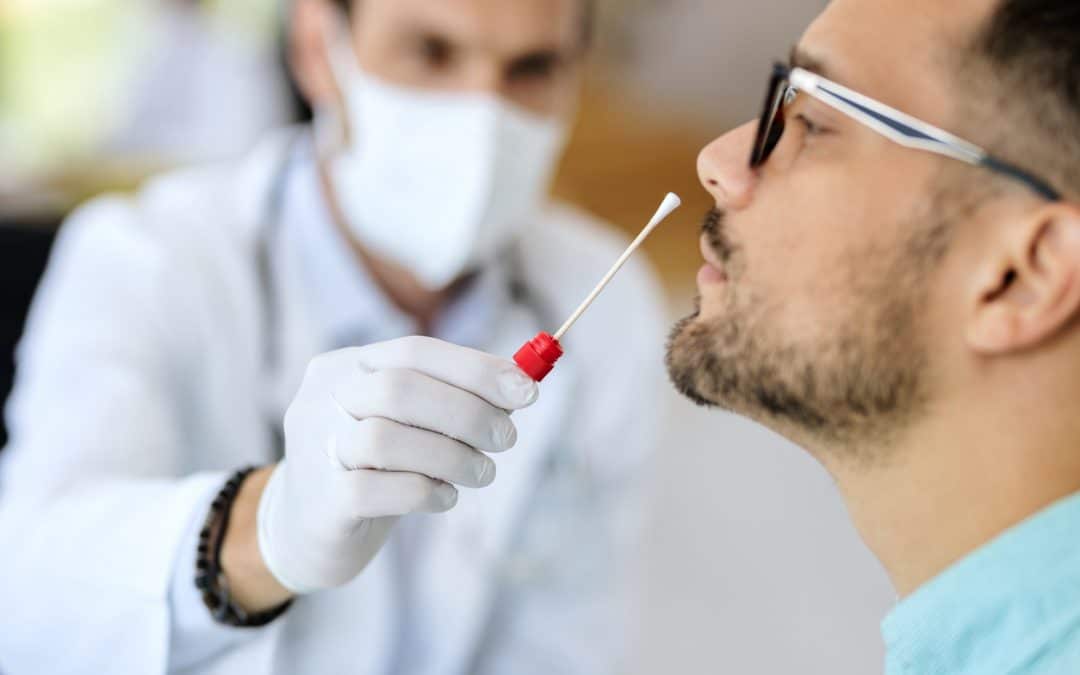Preventing the Spread of COVID-19
So far for the month of February, we have been focused on return-to-work strategies and creating a safe environment for employees to return to. We talked about the importance of incorporating a screening process and investing in COVID-19 testing. We also outlined the steps for building an office health kit that can aid in preventing the spread of COVID-19. Now, it is important to cover the steps you should take if an employee contracts COVID-19 or believes they have been exposed to COVID-19, as this will be a vital part of your return-to-work plan.
COVID-19 Positive Employees
According to the CDC, employees who test positive for COVID-19, have symptoms of COVID-19, or believe they may have been exposed to COVID-19, should return home immediately and quarantine. Instruct the infected employee to remain at home in quarantine until they are released by a health official or have met these CDC guidelines updated in July 2020:
- Employees may return to work 10 days after their symptoms first appeared and once they have gone 24 hours with no fever without the use of fever-reducing medications and all other symptoms of COVID-19 are improving. Loss of taste and smell may persist for weeks or months after recovery and need not delay the end of isolation.
- If employees tested positive but experienced no symptoms, they may return to work 10 days after they tested positive.
- If employees were exposed or believe they were exposed to COVID-19, they may return to work 14 days after their last exposure to that person.
- Keep in mind those that experience more severe symptoms may need more than 10 days to recover and return-to-work.
Developing Protocols for Covid-19 Positive Employees
Fisher Phillips, the employment law firm, suggests taking these additional steps when an employee tests positive for COVID-19:
1. Conduct Contact Tracing: As soon as you learn that one or more employees has been diagnosed, have them identify all other employees or third parties who might have been exposed during the infectious period. Have them use the “6-15-48” rule, meaning those who worked in “close proximity” (within six feet) for a prolonged period of time (15 minutes or more) with the infected employee during the 48-hour period before the onset of symptoms.
2. Address Those Who Fit in the “6-15-48” Rule: You should notify all workers who were in contact with the infected employee. There are specific CDC guidelines for non-critical infrastructure workers and critical infrastructure workers and how they can continue to work after being notified. Click here to learn more.
3. Record, Report, and Investigate: OSHA recently unveiled new recordkeeping requirementsrequiring covered employers to make an increased effort to determine whether they need to record and report confirmed coronavirus cases in the workplace. To ensure compliance, you should document your efforts to determine if the positive COVID-19 case was work-related. To learn what steps you should take to figure out the work-relatedness of a recent COVID-19 case, click here.
4. Clean and Disinfect: Follow the CDC guidelines for cleaning and disinfecting the workplace after a positive COVID-19 case. Make sure the cleaning staff or third-party sanitation contractor cleans all the areas the infected employee went or may have went, focusing on common touched surfaces, such as door handles.
5. Determine what Other Employees or Third Parties Should Be Notified: When an employee tests positive for COVID-19, you should notify all employees who work in same area as the infected employees, as well as any third parties that might have been exposed. Remember that notifying others should be done without revealing any confidential medical information unless you obtained the employee’s signed authorization to disclose their diagnosis.
6. Determine Eligibility for Paid Time Off: Consider your company policy as well as any local, state, or federal guidelines to determine if the infected employee or any others qualify for paid time off. If you are a covered employer under the Families First Coronavirus Response Act (FFCRA), the infected employee may be eligible for emergency paid sick leave.
To learn more, visit Fisher Phillips. In addition, SHRM has curated a list of resources for employers to use when they have a positive COVID-19 case. Click here to view them!








